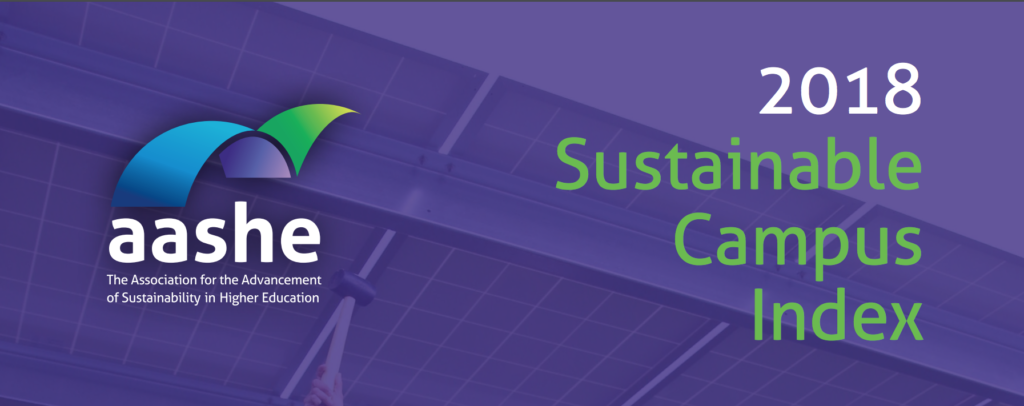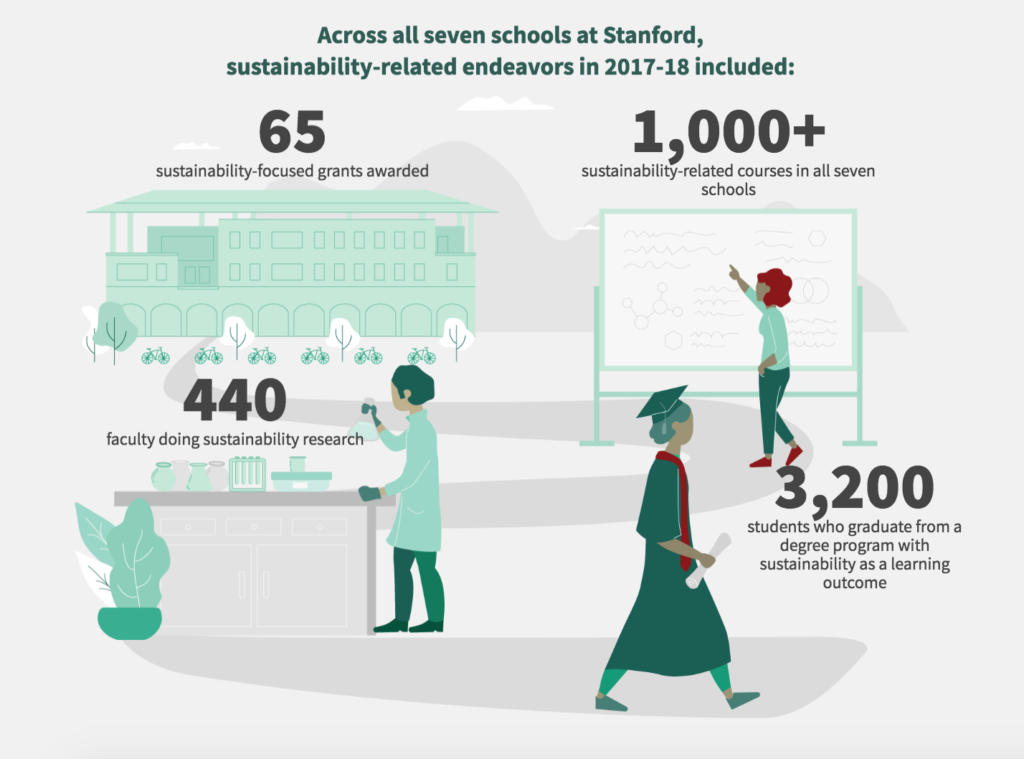
Leading the Way to a Sustainable Campus
Amy Hou | November 7, 2018 | Energy & Sustainability
There are more than 53,000 colleges and universities in the United States, each home to as many as 50,000 students. With those figures in mind, it’s easy to understand why colleges are some of the nation’s leading energy consumers. Cognizant of their obligation to reduce their carbon footprints, many of these schools are beginning to leverage their size and influence to reduce energy usage and become a truly sustainable campus, with the help of simplified benchmarking.
High Energy Usage in Higher Education
According to MGE, colleges and universities in the U.S. use an average of 18.9 kilowatt-hours (kWh) of electricity and 17 cubic feet of natural gas per square foot annually. To put this into perspective, a typical higher education building sized around 50,000 square feet consumes more than $100,000 worth of energy each year. All told, these usage rates amount to $14 billion in annual energy costs for U.S. educational institutions.
Many institutions are making an effort to act on reducing energy usage, greenhouse gas emissions, and waste per capita. However, their efforts are tough to track without ongoing benchmarking. To help, AASHE enables universities to benchmark and report on their sustainability goals with the STARS (Sustainability Tracking, Assessment, and Rating System) guidelines. STARS aims to drive sustainable campuses forward by providing a common set of measurements, serving as a platform for schools to amplify their accomplishments.
Looking to track and report on your sustainability initiatives? Check out six dashboard views proven to drive sustainability results.
Recognizing Outstanding Sustainable Campuses
Every year, AASHE releases its Sustainable Campus Index, which recognizes top-performing colleges and universities in 17 sustainability impact areas, including academics, engagement, operations, and administration. One university that consistently tops AASHE’s rankings? Stanford. Stanford president, Marc Tessier-Lavigne, believes that “by engaging in sustainability-focused research and education, as well as reducing the university’s own environmental impact, [Stanford] can create a healthier environment for generations to come.”
What makes Stanford stand out to AASHE isn’t simply the initiatives themselves; it’s how clearly and transparently the school can quantify its accomplishments. For example, Stanford aims to be 80 percent carbon free by 2025 and to achieve zero waste by 2030. Its energy portfolio is 65 percent renewable, and between 2017 and 2018, Stanford reduced its landfill waste by more than 750 tons. By setting ambitious goals and granularly benchmarking progress on those goals, Stanford has attained the third highest score from AASHE of all time.
AASHE Calls for Simplified Data
AASHE’s emphasis on benchmarking has already been impactful in fostering sustainable campuses, but the organization still sees room for improvement. In its 2018 strategic plan, AASHE called for a simplified data collection process to improve the accuracy of data reported and lessen the operational burden of data management.
Simplifying the data collection process would not only enhance the credibility of information reported to AASHE, but it would also significantly reduce costs for universities and colleges. Sustainability departments within higher education institutions are often the first to be hit with budget cuts, and under those conditions, teams rarely have the time to dedicate to combing through utility bills for granular energy data.
By implementing automation in the data collection process, sustainability teams can spend less of their valuable time on data collection and more on strategic initiatives that will earn them a coveted spot on the AASHE Sustainable Campus Index. According to ENERGY STAR, using cost-effective methods of analyzing utility data, colleges and universities can reduce energy usage and cut energy bills by 30 percent or more.
Using cost-effective methods of analyzing utility data, colleges and universities can cut energy bills by 30% or more.
Higher education institutions are often looked to as leaders in driving energy usage reduction and sustainability initiatives, all while lacking the resources to get granular with their efforts. Simplified, automated data collection can serve as a valuable stepping stone on the path to a more cost-efficient and sustainable campus.
Learn more about simplifying your energy and sustainability data collection process here.
YOU MAY ALSO LIKE:
- Solutions Sheet: Utility Data for Higher Education
- Simplifying Compliance for Building Energy Benchmarking & Transparency Laws
- Top 5 Tips for Successful Energy Management
If you like what you’re reading, why not subscribe?
About Amy Hou
Amy Hou is a Marketing Manager at Urjanet, overseeing content and communications. She enjoys writing about the latest industry updates in sustainability, energy efficiency, and data innovation.
You May Also Like
Support Business Continuity by Embracing ESG
Honor Donnie | March 18, 2022 | Energy & Sustainability


